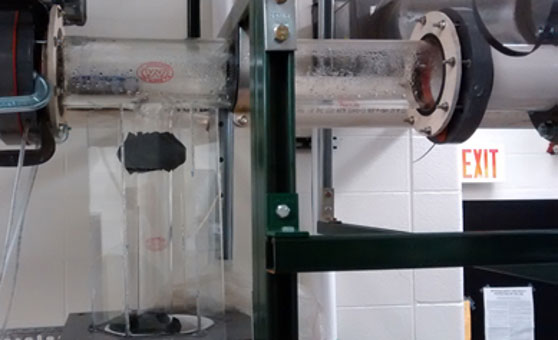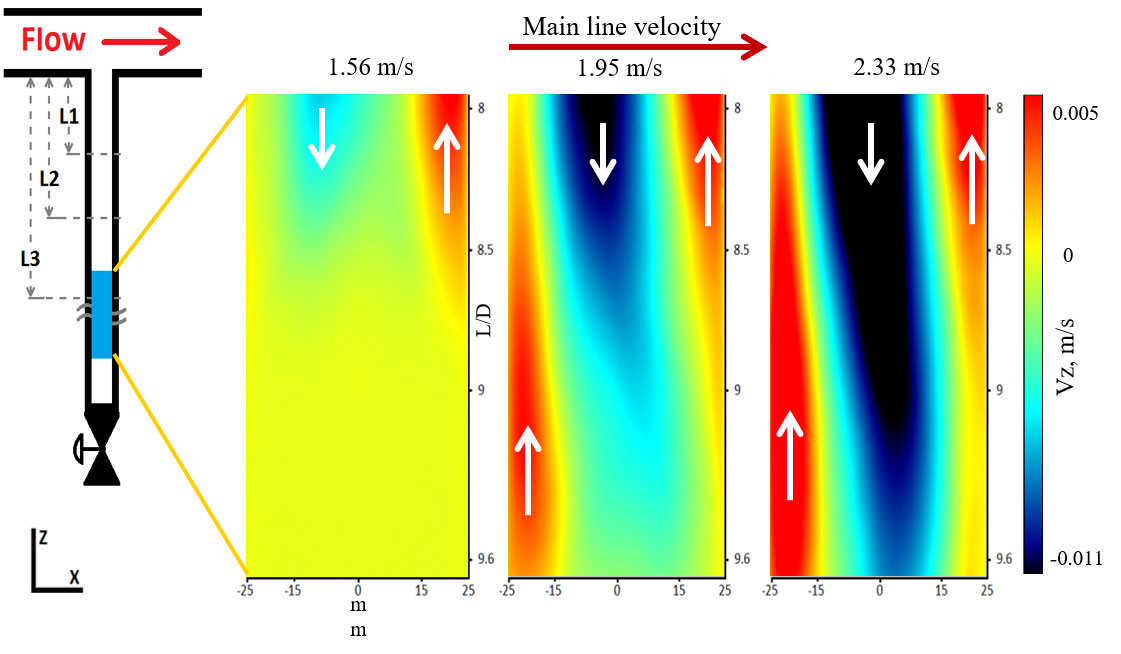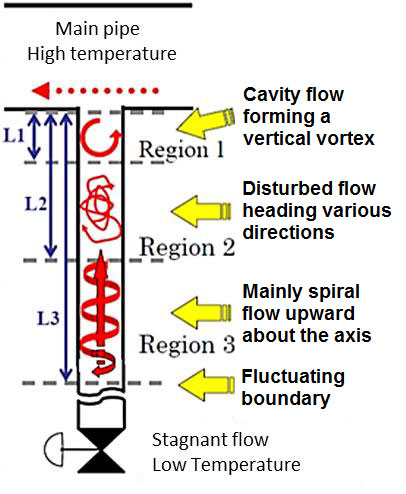Thermal fatigue in stagnant branch lines
Project description

experimental apparatus for the investigation of thermal-fatigue
We have built an experimental apparatus for the investigation of thermal-fatigue occurring in stagnant branch-lines departing from main coolant lines of nuclear power plants.
Particle Image Velocimetry (PIV) and other high-resolution instrumentation is used to gather high-fidelity data.
Experimental results

Tjunction region 3 measurements

figure 1
Particle Image Velocimetry (PIV) and Laser Doppler Velocimetry (LDV) is used to perform high-resolution measurements of the flow field in the isolated branch line. As expected, increasing penetration depth with increasing main line flow-rate is observed. A cork-screw flow structure upstream of the penetration boundary is also seen. see figure 1.

